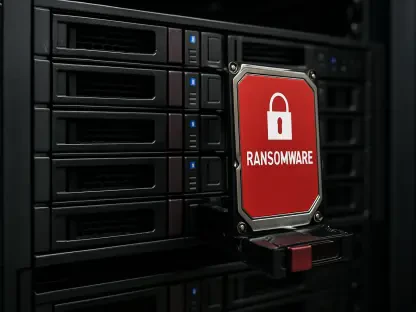In an era where digital threats loom larger than ever, a staggering 92% of enterprises that have suffered breaches admit that stronger foundational security practices could have prevented their losses, painting a vivid picture of a pervasive issue. Despite the growing sophistication of cyber attacks, many incidents remain entirely avoidable. A recent comprehensive study reveals that while the importance of basic cyber hygiene is widely acknowledged, far too few organizations translate this awareness into actionable, robust strategies. The gap between recognition and implementation leaves companies vulnerable to risks that could be mitigated with straightforward measures. As cyber threats continue to evolve, the need to solidify these fundamental defenses becomes not just a priority but a critical lifeline for businesses aiming to safeguard their operations and reputation.
Addressing the Gaps in Cybersecurity Practices
Unveiling the Scale of Preventable Incidents
The reality of cybersecurity today is sobering, with 66% of organizations reporting a security incident in the past year, yet only a mere 15% rating their cyber hygiene practices as mature. This stark contrast underscores a systemic failure to prioritize the basics, such as regular updates, strong password protocols, and employee awareness. Human error stands out as a glaring vulnerability, identified by 52% of surveyed enterprises as their most significant weak point. This points to an urgent need for comprehensive training programs that can transform staff into the first line of defense rather than an entry point for attackers. The persistence of preventable breaches suggests that many companies are still grappling with the fundamentals, often overlooking simple steps that could drastically reduce their exposure to threats.
Leadership’s Role in Driving Change
A troubling disconnect exists at the executive level, where only 32% of respondents indicate that cyber hygiene ranks high on the C-suite’s agenda. This lack of prioritization from leadership often trickles down, resulting in insufficient resources and attention devoted to basic security measures. Without a top-down commitment, efforts to instill a culture of vigilance and accountability remain fragmented. Experts argue that treating cyber hygiene as a static checklist rather than a dynamic, ongoing process is a fundamental misstep. Leadership must champion the integration of continuous practices, ensuring that resilience becomes a measurable outcome rather than an abstract goal. Bridging this gap requires a shift in mindset, where executives view foundational security not as an optional task but as a cornerstone of organizational stability.
Leveraging Technology and Discipline for Resilience
Harnessing AI for Enhanced Security
Amid the challenges, a promising trend emerges with 84% of enterprises expressing confidence in artificial intelligence (AI) to bolster cyber hygiene. By automating repetitive tasks like monitoring and threat detection, AI can address the shortcomings of manual processes, reducing the likelihood of human error. This technology offers a pathway to embed security into daily workflows, making it less of a burden and more of a seamless operation. As threats grow in complexity, the ability of AI to adapt and respond in real-time becomes invaluable. Forward-thinking organizations are beginning to see automation not just as a tool but as a competitive advantage, enabling them to stay ahead of risks that might otherwise go unnoticed. The potential of AI to transform cyber hygiene into a proactive rather than reactive endeavor cannot be overstated.
Strengthening Vendor Security and Access Controls
Another critical area demanding attention is the oversight of vendor and supplier security, with over half of enterprises failing to conduct continuous assessments after onboarding third parties. This oversight is particularly risky given the increasing frequency of supply chain attacks that exploit these connections. On a more positive note, 67% of organizations are taking steps to audit user access privileges on a quarterly basis, though experts suggest increasing this frequency for tighter control. Strengthening these practices requires a disciplined approach to ensure that external partners adhere to the same rigorous standards as internal operations. By prioritizing regular evaluations and enforcing strict access policies, companies can significantly reduce vulnerabilities that stem from interconnected networks. This focus on third-party security, paired with consistent internal audits, forms a robust defense against breaches that exploit peripheral weaknesses.
Final Thoughts on Building a Secure Future
Reflecting on the insights gathered, it becomes evident that many cybersecurity breaches endured by enterprises stem from lapses in basic protective measures. Human error has repeatedly surfaced as a critical Achilles’ heel, often worsened by inadequate training and a lack of emphasis from leadership. While some proactive steps, such as periodic access audits, have been implemented, persistent gaps in vendor oversight and inconsistent prioritization leave much to be desired. Looking ahead, the adoption of AI emerges as a beacon of hope, offering tools to automate and reinforce security practices. Enterprises are encouraged to foster a cultural shift, embedding cyber hygiene as a continuous, integral process rather than a one-time effort. By committing to these actionable strategies—enhancing training, securing third-party relationships, and leveraging cutting-edge technology—organizations can build a resilient foundation to navigate the ever-evolving landscape of digital threats.









